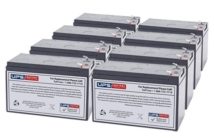Batteries use electrolytes as the chemical source for producing electricity. Electrolyte is any substance that releases ions when dissolved in a suitable solvent (like gel) or liquid (like water or juice).
Electrolyte Reactions
Every battery is made up of anode, cathode, and an electrolytic solution. Anode and cathode are electrodes (electricity conducting material through which electric charges or current can flow) that are submerged in the electrolytic solution and connected externally through a conducting wire. On being dissolved in the solvent, electrolyte releases ions. And we know that moving ions or electrons produces electric current. Let’s see how.
The ions released by the electrolyte react with the anode to release one or more electrons. As electrons accumulate near the anode, they start moving through the wire towards the cathode, which has no or very few electrons. This movement of electrons produces electric current that powers any gadget connected through the wire, as shown in Figure 1.

Are you wondering what is happening to all the electrons going to the cathode? Well, the cathode reacts with the electrolyte and the electrons to form a compound and uses up the electrons in the process.
Types of Electrolytes
Depending on the extent to which the electrolyte can ionize (release ions), electrolytes may be strong or weak. Strong Electrolytes are those compounds that ionize to a great extent in an aqueous solution and conduct strong electric current. Weak Electrolytes are those compounds that ionize to very small extent in an aqueous solution and conduct very small amount of electric current.
Commonly Used Electrolytes
Different batteries use different chemical compounds as electrolyte. Some of such commonly used compounds are Sodium Chloride, Nitric Acid, Sulphuric Acid, Sodium Acetate, Chloric acid, etc.
The first battery was invented by Italian physicist Alessandro Volta in the year 1799 by generating continuous electric current using voltaic piles. Since then, the form of battery has changed but the basic concept remains the same. Anode, cathode and an electrolyte are still needed to make a battery.



